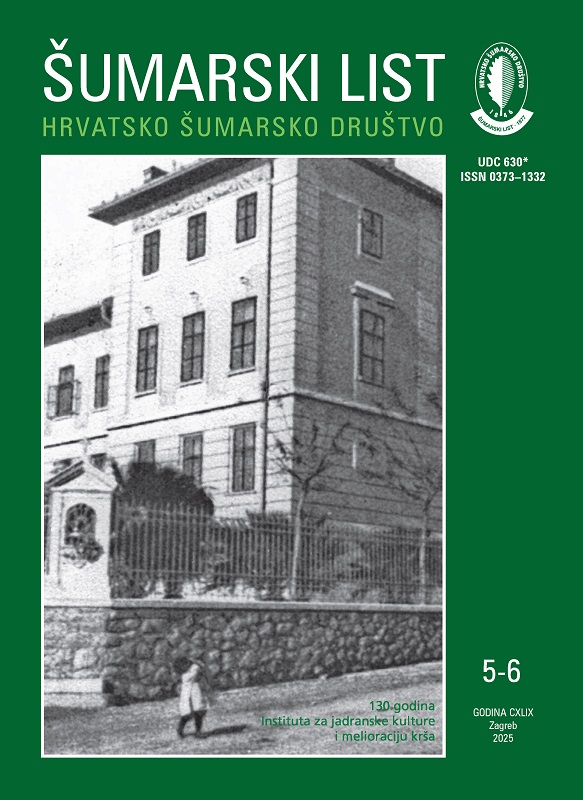| |
| RIJEČ UREDNIŠTVA |
| |
|
|
| Uredništvo HŠD | |
| Should we be surprised by the higher export of timber than furniture from Croatia?
pdf
HR
EN
|
217 |
| |
| IZVORNI ZNANSTVENI ČLANCI |
| |
|
|
| Tatjana Mandić Bulić, Marilena Idžojtić | UDKps://doi.org/10.31298/sl.149.5-6.1 |
| Woody plants of the Brijuni national park
pdf
HR
EN
|
219 |
| Esmera Kajtaz, Dženita Alibegić, Haris Nikšić, Željko Španjol, Boris Dorbić | UDKps://doi.org/10.31298/sl.149.5-6.2 |
| Determination of antioxidant profile of the essential oil and extract samples obtained from lavender (Lavandula angustifolia Miller)
pdf
HR
EN
|
233 |
| Ayşegül Tekeş, Serkan Özdemir, Candan Aykurt, Serkan Gülsoy, Kürşad Özkan | UDKps://doi.org/10.31298/sl.149.5-6.3 |
| Species distribution modeling of red hawthorn (Crataegus monogyna Jacq.) in response to climate change
pdf
HR
EN
|
243 |
This study aimed to estimate the current and future potential status of Crataegus monogyna Jacq. which is one of the important Non-Wood Forest Product (NWFPs) species in the Bozdaglar Mountains in the Aegean Region of Türkiye. MaxEnt method was used for potential distribution modelling and mapping of the target species. Climate data were obtained from the WorldClim database. Data on future climate conditions were downloaded from the UKESM1-0-LL projection for the years 2081-2100. As a result of the modelling process, the AUC value of the training dataset was 0.802 and the test dataset AUC value was 0.609. The variables shaping the model were BIO12 (annual precipitation), BIO7 (temperature annual range (BIO5-BIO6)), HI (heat index), TPI (topographical position index), and BIO13 (precipitation of wettest month). We found that the suitable distribution area of the target species, which is currently 182,214 ha, is estimated to decrease by 7,311 ha under the worst-case scenario SSP5 8.5, whereas the unsuitable area, which is currently 75,490 ha, is estimated to increase by 250,393 ha. The findings obtained in this study will aid in developing site-specific conservation strategies and management plans relevant to forestry.
|
| Ali Bayraktar, Deniz Güney, Fahrettin Atar, Ibrahim Turna | UDKps://doi.org/10.31298/sl.149.5-6.4 |
| Evaluation of rooting responses in Lagerstroemia indica L. cuttings under different greenhouse settings, rooting media, and phytohormonal applications
pdf
HR
EN
|
255 |
| Hediye Aktaş Aytepe, Ali Kavgaci | UDKps://doi.org/10.31298/sl.149.5-6.5 |
| Syntaxonomical contribution to the vegetation classification of Türkiye from SW Anatolia: a plant diversity hotspot
pdf
HR
EN
|
265 |
| |
| PREGLEDNI ČLANCI |
| |
|
|
| Igor Anić | UDKps://doi.org/10.31298/sl.149.5-6.6 |
| History of pedunculate oak forest regeneration in Croatia
pdf
HR
EN
|
279 |



